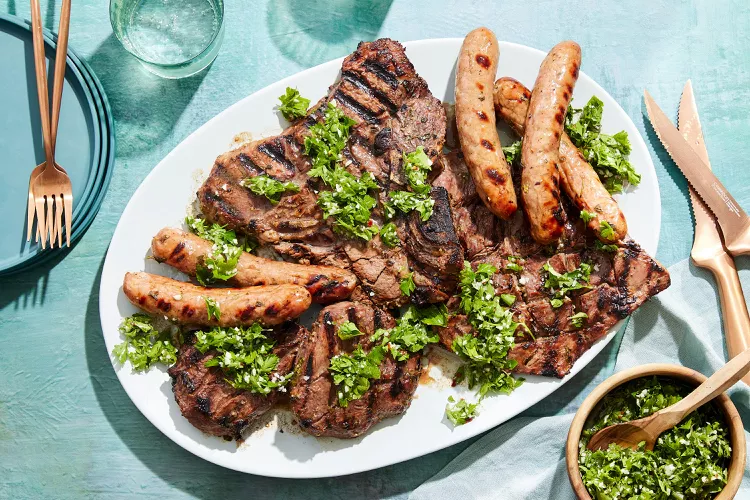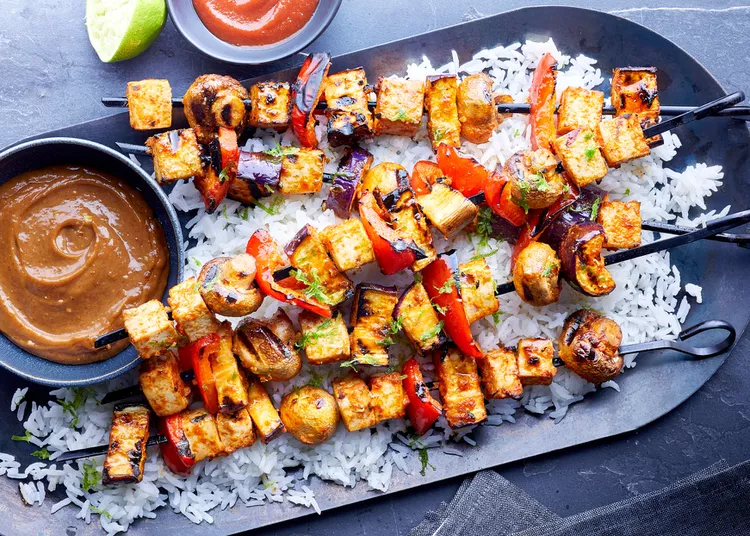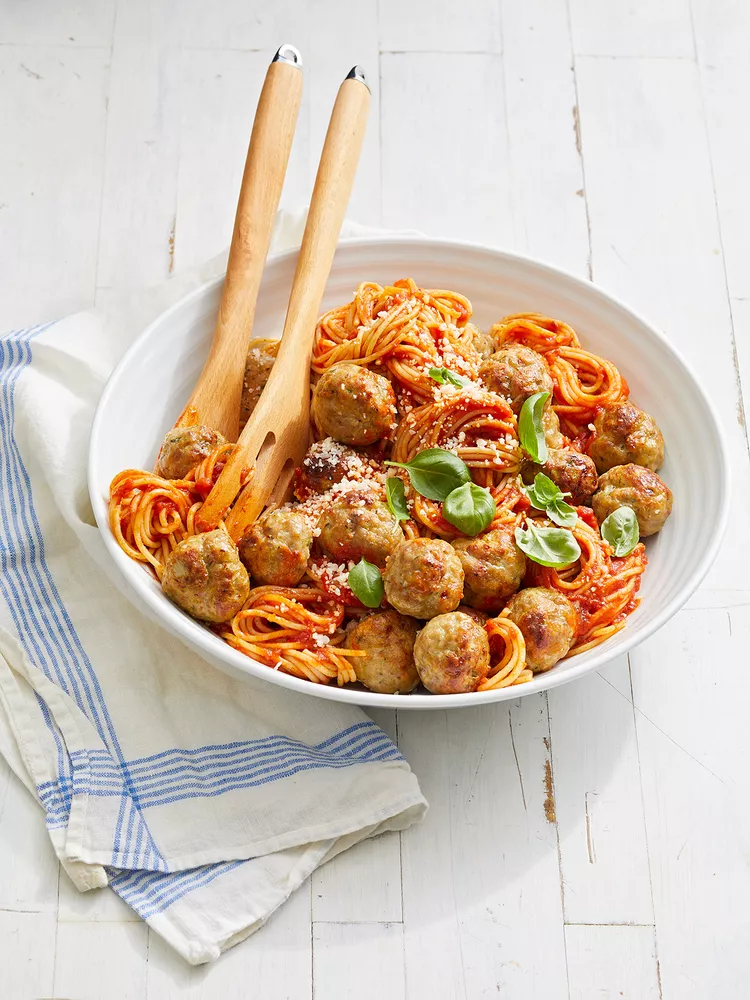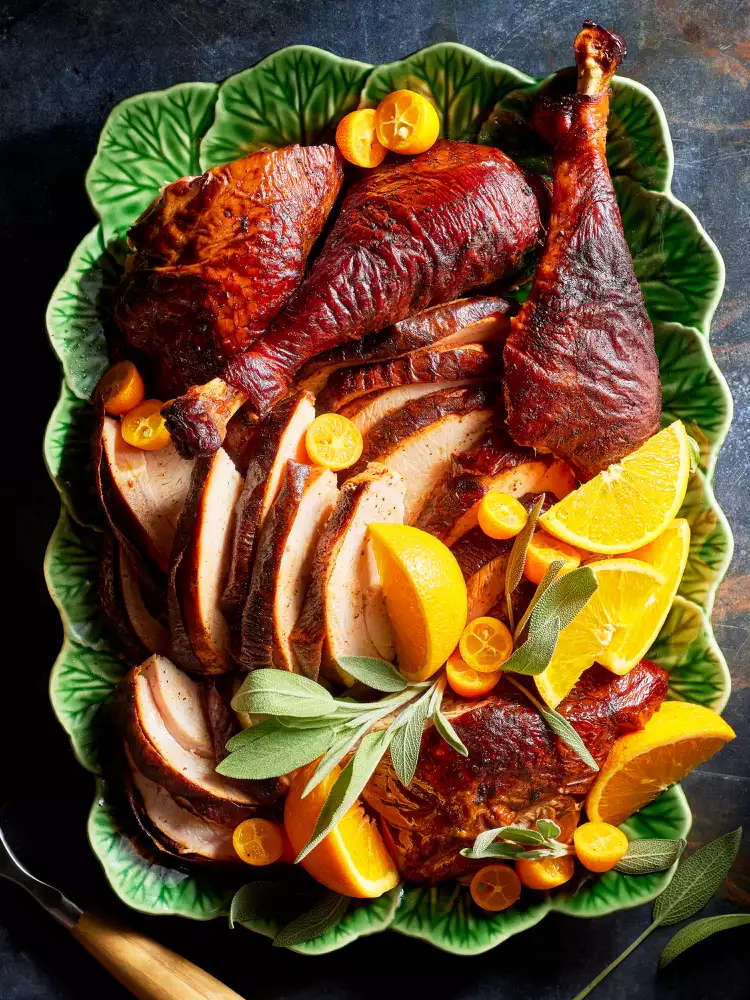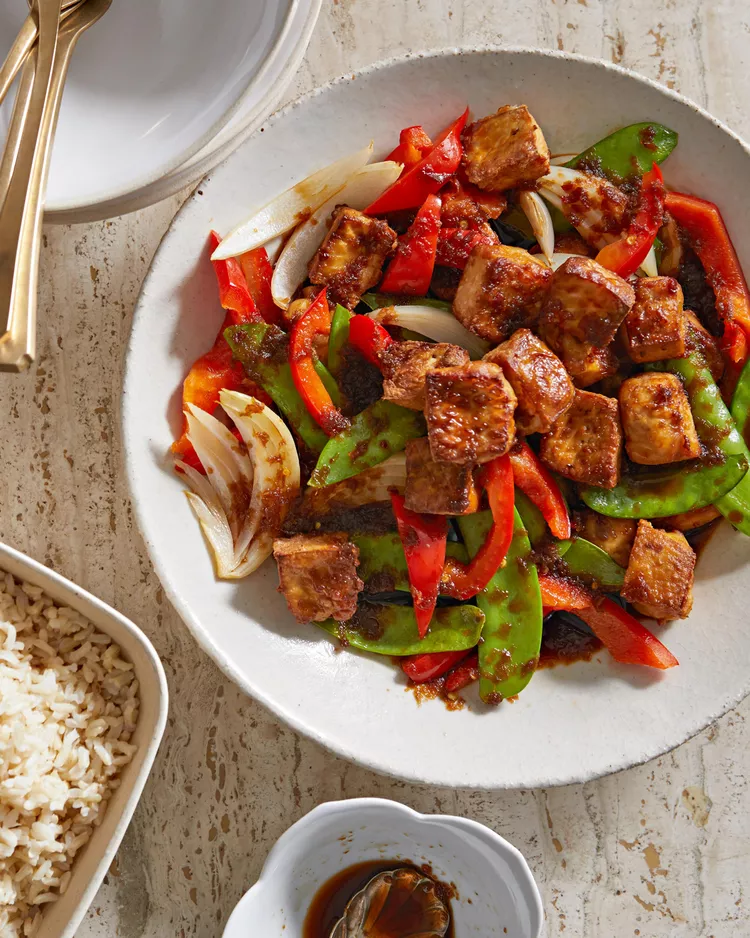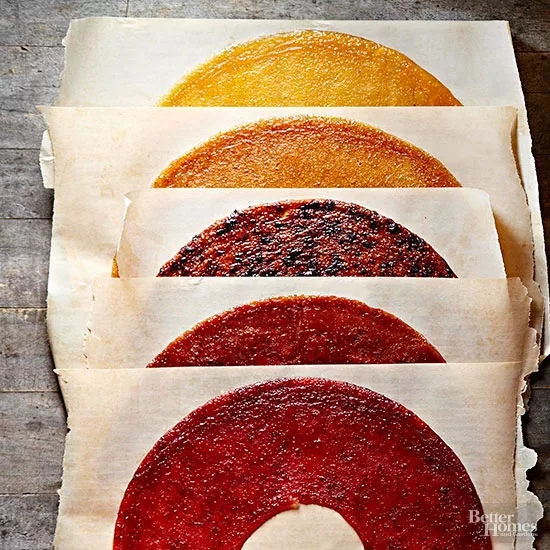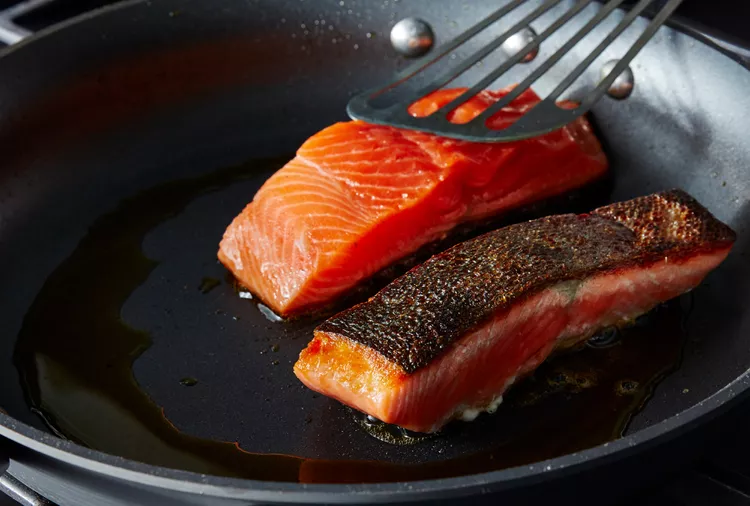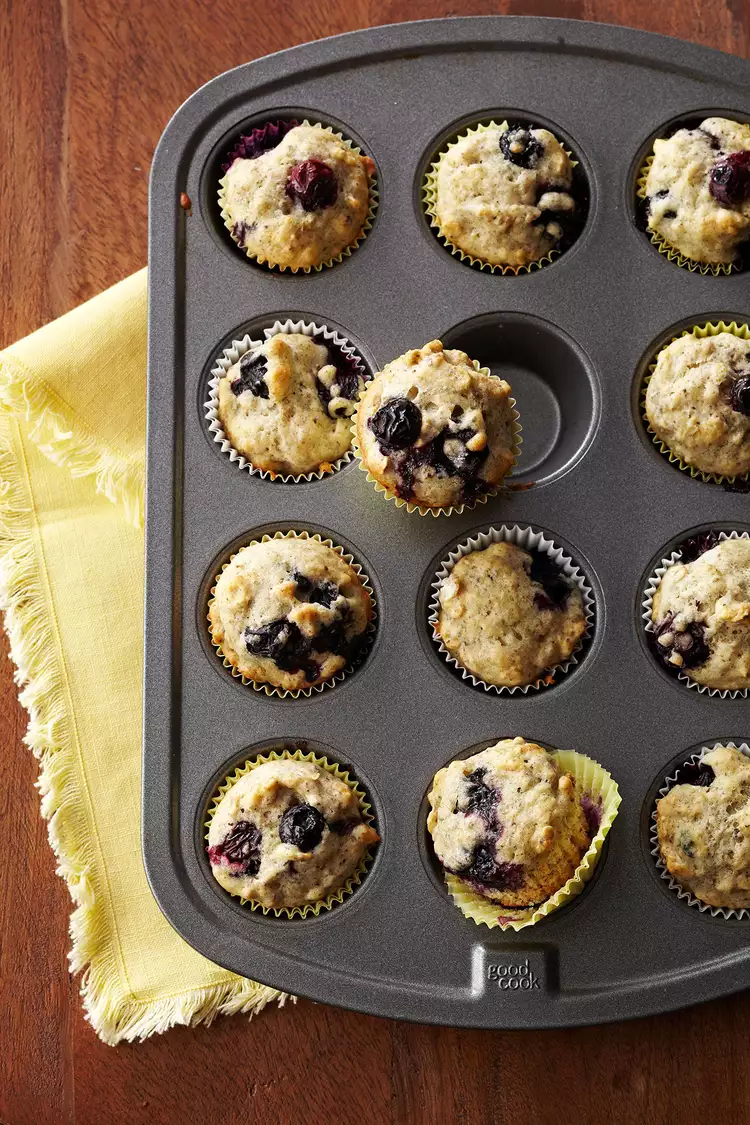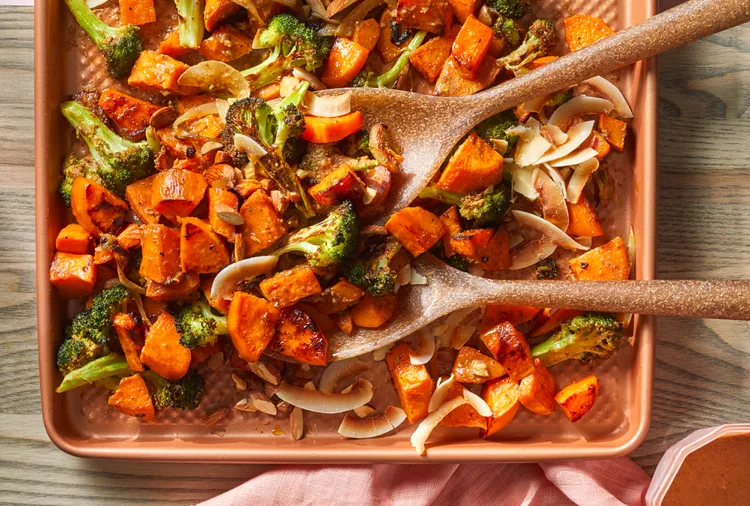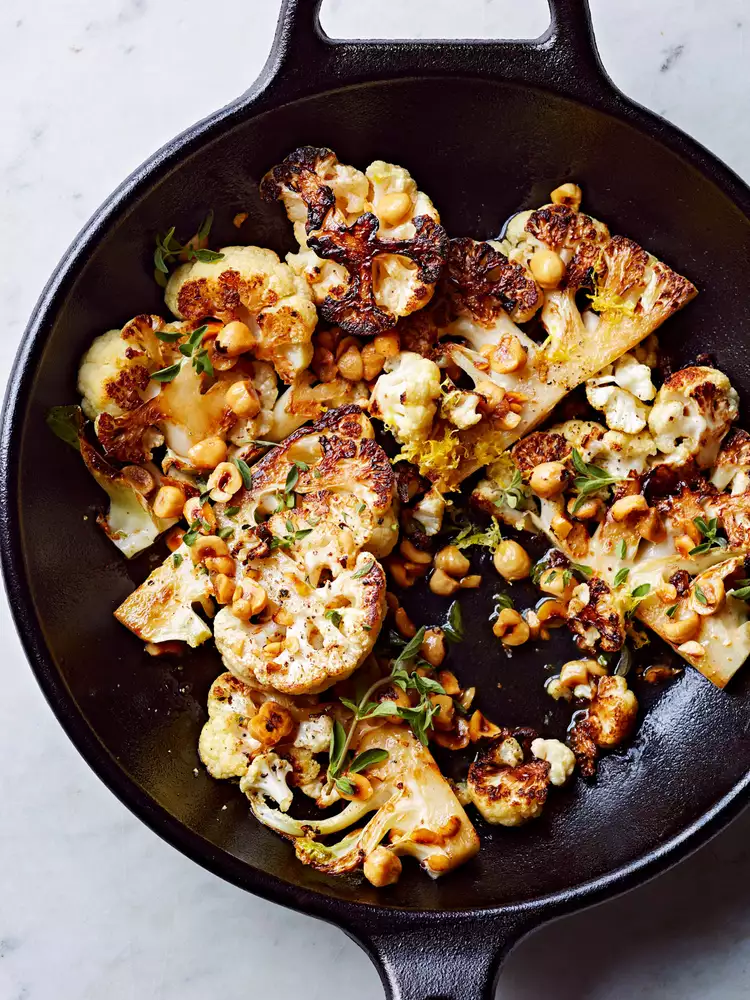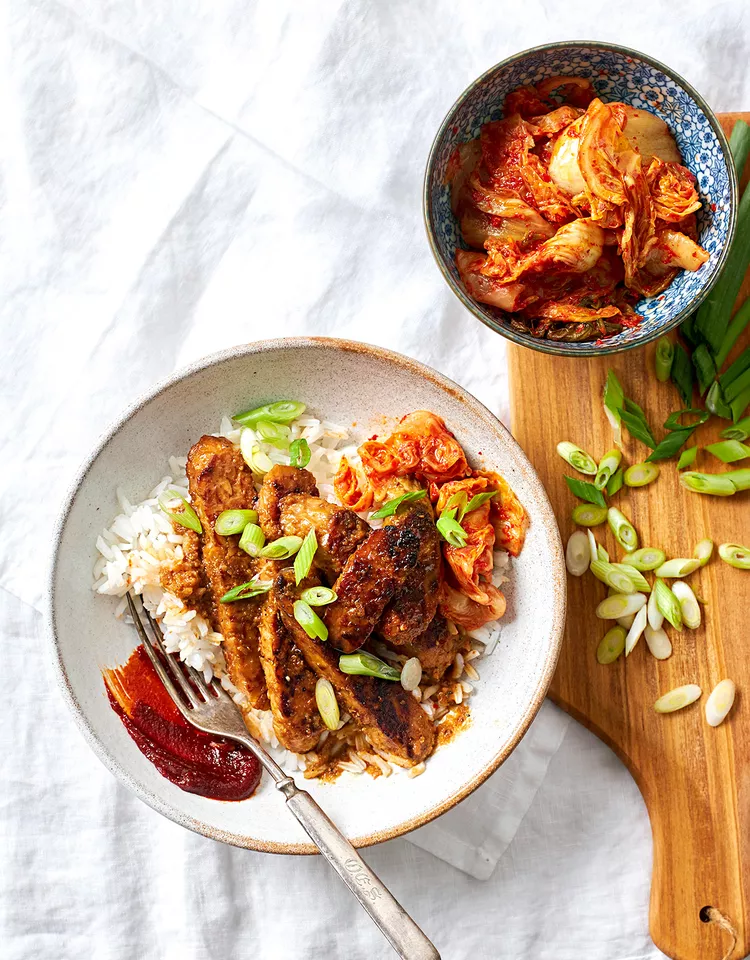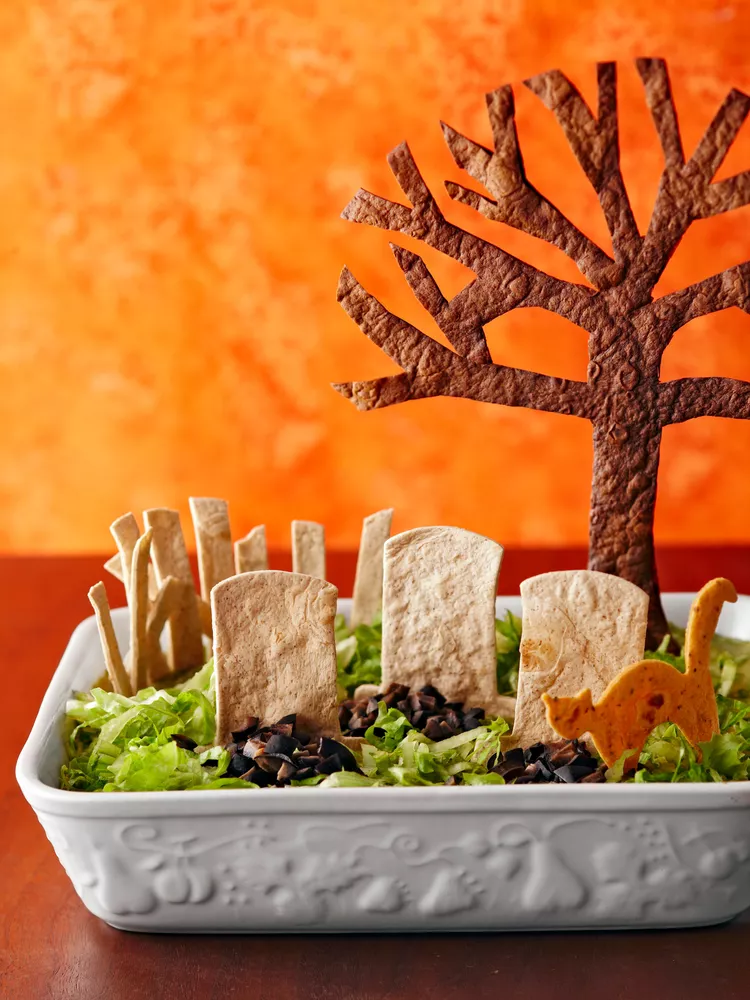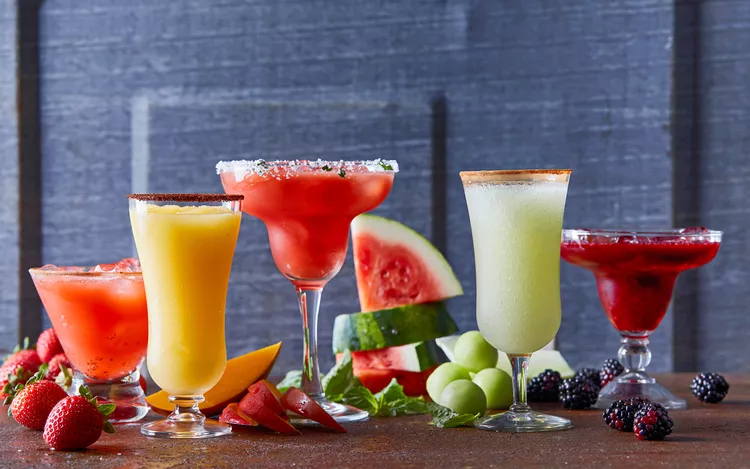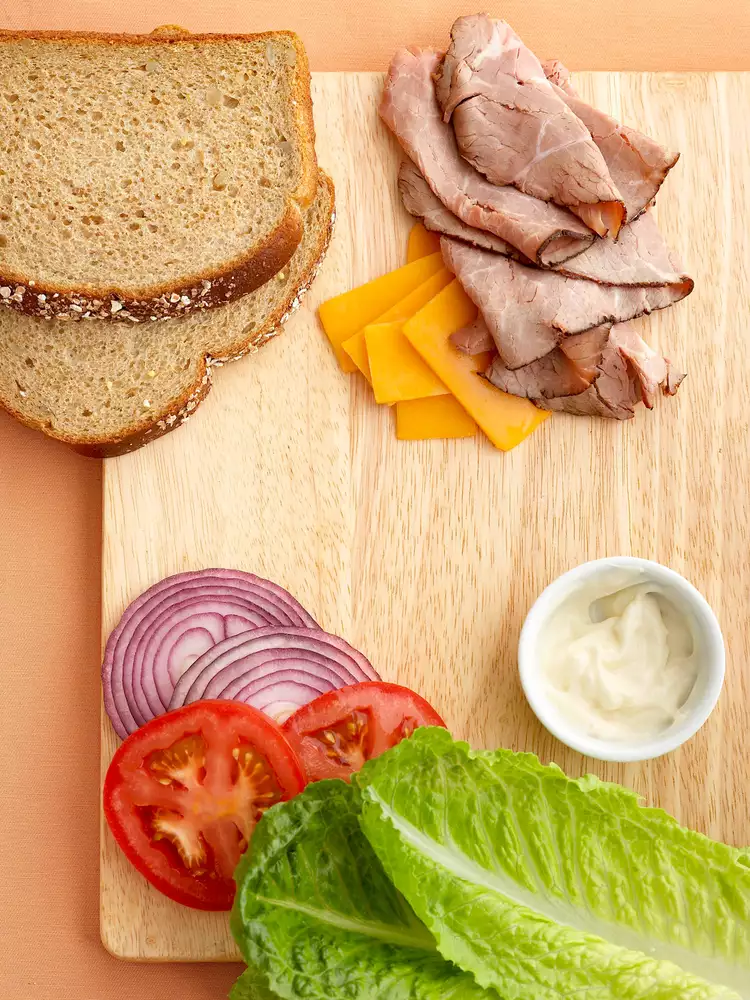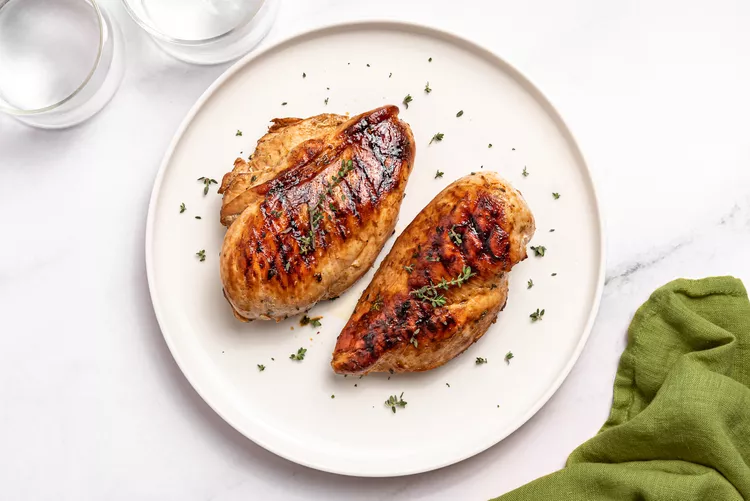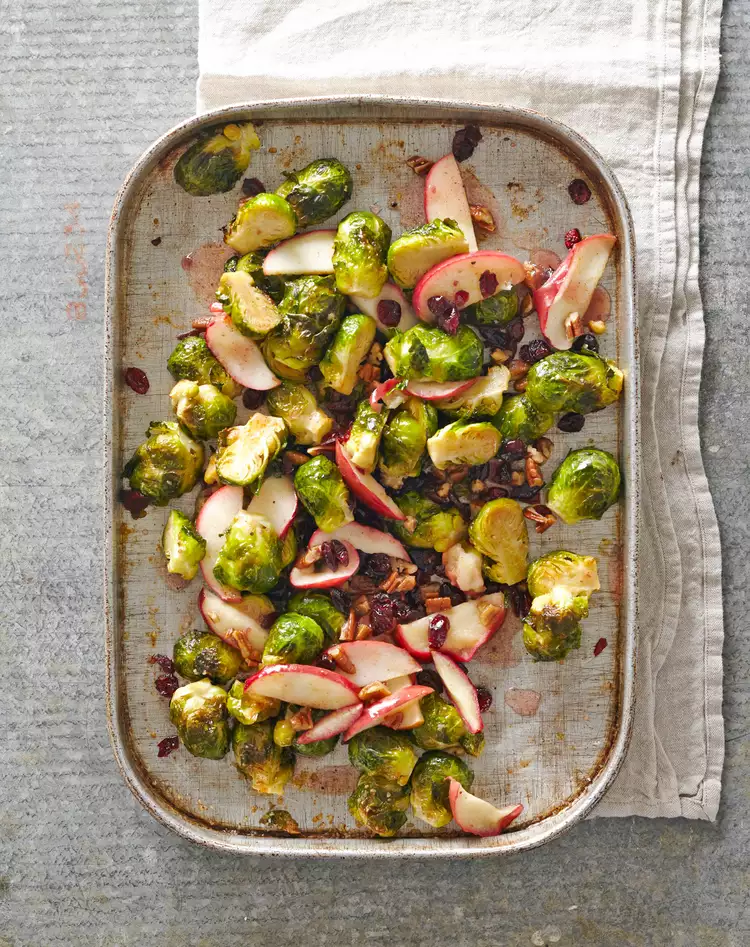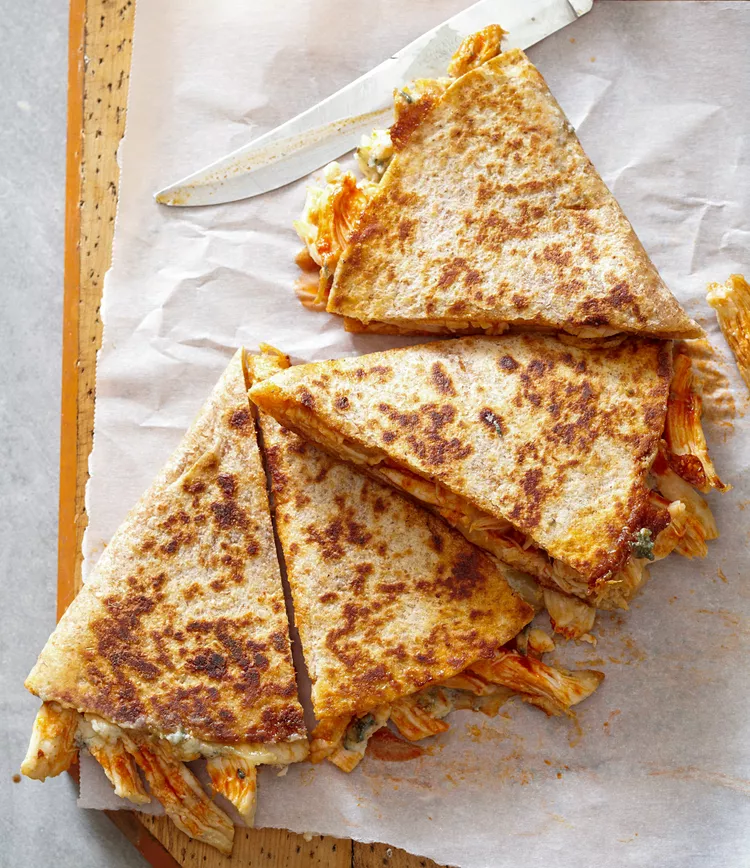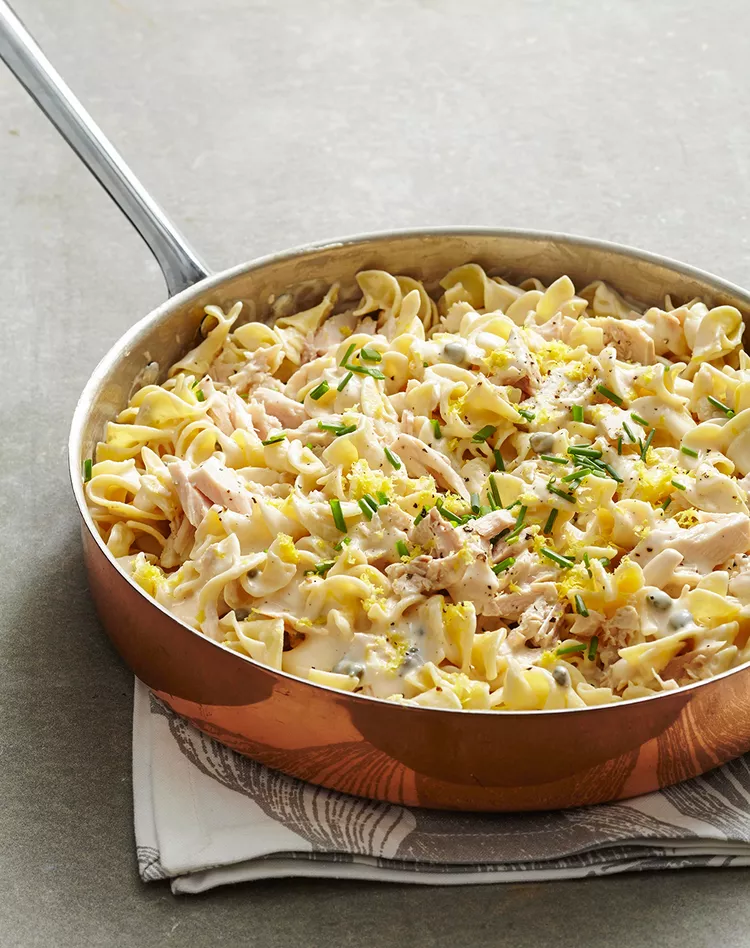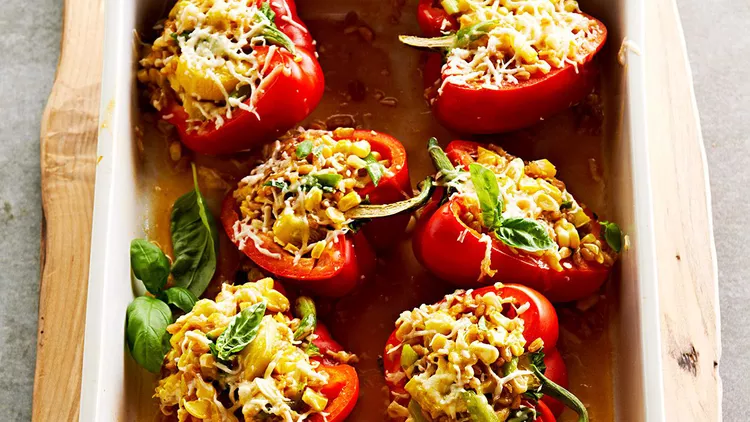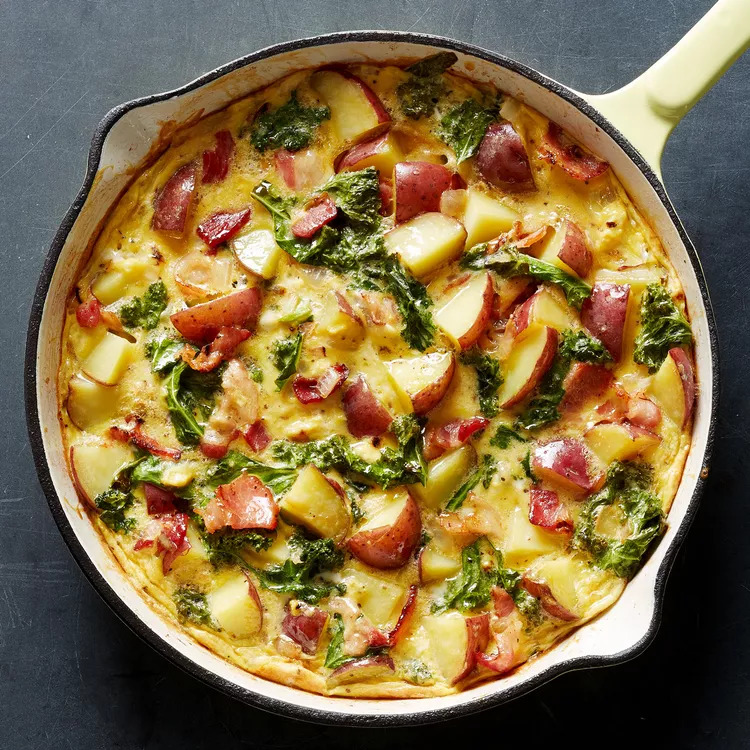Argentine parrillada is a meal made up of a variety of meats that are grilled or barbecued. This version uses four types, including three different cuts of beef along with bratwurst, for a dinner big enough to serve a crowd.
This isn't your standard barbecue. Also known as "asado", Argentine-style barbecue is traditionally cooked over a parrilla grill. This type of grill has a heavy-duty metal grate that can be raised or lowered, and relies on wood or charcoal for heat. As with a traditional parrillada, we include a variety of meats in this recipe for a variety of textures, flavors, and for a balanced offering that won't break the bank. Offering a variety of choices also encourages communal eating—everyone can pick and choose their favorite bites along the way.
Chimichurri is a classic pairing for parrillada, with its bright, herbaceous flavor that complements and cuts through the richness of the meats. Ours comes together in minutes, using 15 cloves of garlic (yes, really!) for a powerhouse of flavor.
What Is Argentine Parrillada?
Argentine parrillada, or asado, is a style of barbecue that features a variety of meats, particularly cuts of beef including short ribs, flank steak, ribeye, and sweetbreads. Other meats can include chorizo, blood sausage (morcilla), and sometimes chicken or pork. The meat is cooked on a parrilla, a large grill with an adjustable height to control the heat level, usually set over charcoal or wood for a smoky flavor. The meat cooks slowly, and evenly, and is typically seasoned only with salt to let the natural flavors shine.
Cooked steaks are often topped with chimichurri—a bright and tangy sauce made with fresh herbs and garlic. Served simply with accompaniments like grilled vegetables, salad, or bread, meats are served in stages, family-style, as they are ready. Guests are encouraged to gather around the grill as the "asador" (grill master) prepares the meat. It's a social experience that's festive and a great way to celebrate special occasions, including birthdays, holidays, and more.
Tips for the Best Argentine Parrillada
For the best parrillada, keep these tips in mind:
- Choose high-quality meat: Since the focus is on the meat, be sure to choose high-quality cuts that are flavorful and fresh.
- Marinate or season simply: If you prefer to marinate some meats and not others, you can also simply season the meat with coarse salt before grilling to let its natural flavor shine.
- Grill continuously: To keep your guests happy and take some of the pressure off of having everything ready at the same time, serve the meats as they're ready, adding to the experience of the event.
- Rest the meat: Allow the meats to rest for a few minutes after grilling to help retain their juices.
- Make it an experience: A parrillada is a social event. Offer drinks, side dishes, and a festive atmosphere for everyone to enjoy the experience.
Tips for Cooking Sausages
Argentine parrillada typically includes sausages in its array of meats, so here are a few tips for cooking them correctly.
- Use tongs to handle sausages. You don’t want to risk using a fork because poking the casing will let out all of the juices. This is also why you should never cut the sausage apart while grilling to check whether it’s done. Use a thermometer instead.
- Avoid cooking sausages while they’re cold. If they’re made directly after leaving the refrigerator, it could result in uneven cooking since the outside will finish much faster than the inside. Remove them from the refrigerator before cooking so that they are room temperature when they’re added to the grill.
- Avoid overcrowding the sausages. If they’re placed side-by-side, then they aren’t going to turn out as crispy as you would like. Give them each plenty of space on the grill to prevent them from turning out soggy.
What To Serve with Argentine Parrillada
While chimichurri is a classic pairing, you can round out the meal with grilled vegetables, a green salad, grilled provolone cheese (provoleta), crusty bread, grilled potatoes (papas al Plomo), a simple salsa, and of course, Argentine red wine, or beer if you prefer.
Ingredients
-
1 lb. beef skirt or flank steak, cut 1 in. thick
-
1 beef porterhouse steak, cut 1 in. thick
-
2 beef shell (boneless top loin) or ribeye steaks, cut 1 in. thick
-
5 cooked German sausages, such as knackwurst or bratwurst, halved lengthwise
-
1 cup bottled Italian salad dressing
-
2 cloves garlic, minced
-
2 Tbsp. snipped fresh parsley
-
3 tsp. snipped fresh oregano, thyme or marjoram
-
1 tsp. salt
-
½ tsp. freshly ground black pepper
Chimichurri Sauce
-
3 cups snipped fresh parsley
-
15 garlic cloves, minced
-
3 Tbsp. snipped fresh oregano
-
¾ Tbsp. crushed red pepper
-
¾ tsp. kosher salt
-
¾ cup cooking oil
-
½ cup white vinegar
Directions
-
Score Steaks
If desired, trim fat from steaks. Score skirt or flank steak on both sides by making shallow cuts at 1-inch intervals in a diamond pattern.
-
Place Meat in a Resealable Bag
Place all meats in a 2-gallon resealable plastic bag set in a large shallow dish.
-
Mix Marinade
For marinade, in a small bowl, combine salad dressing, garlic, parsley, oregano, salt, and pepper.
-
Marinate the Meat
Pour marinade over the meat; seal bag. Turn bag to coat meat. Marinate in the refrigerator for 4 to 8 hours, turning bag occasionally.
-
Drain and Dry Meat
Drain meat, discarding marinade. Pat meat dry with paper towels.
-
Grill Meat
For a charcoal grill, grill meat on the rack of an uncovered grill directly over medium coals until meat reaches desired doneness, turning meat once halfway through grilling. Allow 17 to 21 minutes for skirt steak, 10 to 15 minutes for shell and porterhouse steaks, and 3 to 5 minutes for sausages. (For a gas grill, preheat grill. Reduce heat to medium. Place meats on grill rack over heat. Cover; grill as above.)
-
Let the Meat Rest
When meats are done (145 degrees F for medium-rare; 160 degrees F for medium doneness) let stand several minutes before slicing.
-
Serve
Serve meats with Chimichurri. Makes 10 servings.
Chimichurri Sauce
-
Combine Ingredients
In a medium bowl, combine parsley, garlic, oregano, crushed red pepper, and salt.
-
Toss the Sauce
Add oil and vinegar. Using a fork, toss to combine. Serve sauce immediately or cover and chill for up to 3 days. Makes 1-1/2 cups.
How To Store and Reheat Leftover Argentine Parrillada
If you have any leftovers after serving, refrigerate leftover meats in an airtight container for up to four days, or freeze for up to two months. Reheat in a preheated 300°F oven, on the stovetop, in the microwave, or back on the grill until you reach your desired temperature.
Not sure what to do with the leftovers? Consider adding them into tacos, empanadas, sandwiches, paninis, salads, pasta dishes, stir-fries, soup and stews, or a breakfast hash.
Argentine Parrillada Variations
In Argentina, parrillada offers a flavorful assortment of meats for a hearty and communal dining experience. This assortment can vary based on regional traditions, the preferences of the asador, and the availability of certain cuts. For your own unique twist, consider these variation ideas:
- Beef: Choose to include ribeye, short ribs, tenderloin, or other cuts of beef as desired.
- Sausages: Offer a variety of sausages, or go for chorizo or morcilla (blood sausage) for a traditional touch.
- Offal: Sweetbreads, kidneys, intestines, and other unique cuts can add to the experience.
- Pork: Pork chops, pork ribs, or other cuts of pork can add variety.
- Grilled chicken: For the less adventurous in the crowd, a few pieces of grilled chicken can be a nice addition.
- Accompaniments: Add even more flavor and interest by offering a variety of accompaniments with the grilled meat, including grilled provolone cheese (a traditional pairing) and grilled vegetables (bell peppers, onions, tomatoes, and more).
- Sauces: Offer other sauces alongside, including salsa criolla (a tangy sauce with fresh tomatoes), ají sauce (a spicy sauce made with ají peppers), provenzal (a garlicky sauce), and more.
Nutrition Facts (per serving)
| 344 | Calories |
| 21g | Fat |
| 2g | Carbs |
| 35g | Protein |
| Nutrition Facts | |
|---|---|
| Servings Per Recipe 10 | |
| Calories 344 | |
| % Daily Value * | |
| Total Fat 21g | 27% |
| Saturated Fat 7g | 35% |
| Cholesterol 89mg | 30% |
| Sodium 703mg | 31% |
| Total Carbohydrate 2g | 1% |
| Total Sugars 1g | |
| Protein 35g | 70% |
| Vitamin C 0.6mg | 1% |
| Calcium 20.2mg | 2% |
| Iron 3.2mg | 18% |
| Potassium 570mg | 12% |
| Folate, total 12.1mcg | |
| Vitamin B-12 4.1mcg | |
| Vitamin B-6 0.5mg | |
*The % Daily Value (DV) tells you how much a nutrient in a food serving contributes to a daily diet. 2,000 calories a day is used for general nutrition advice.
